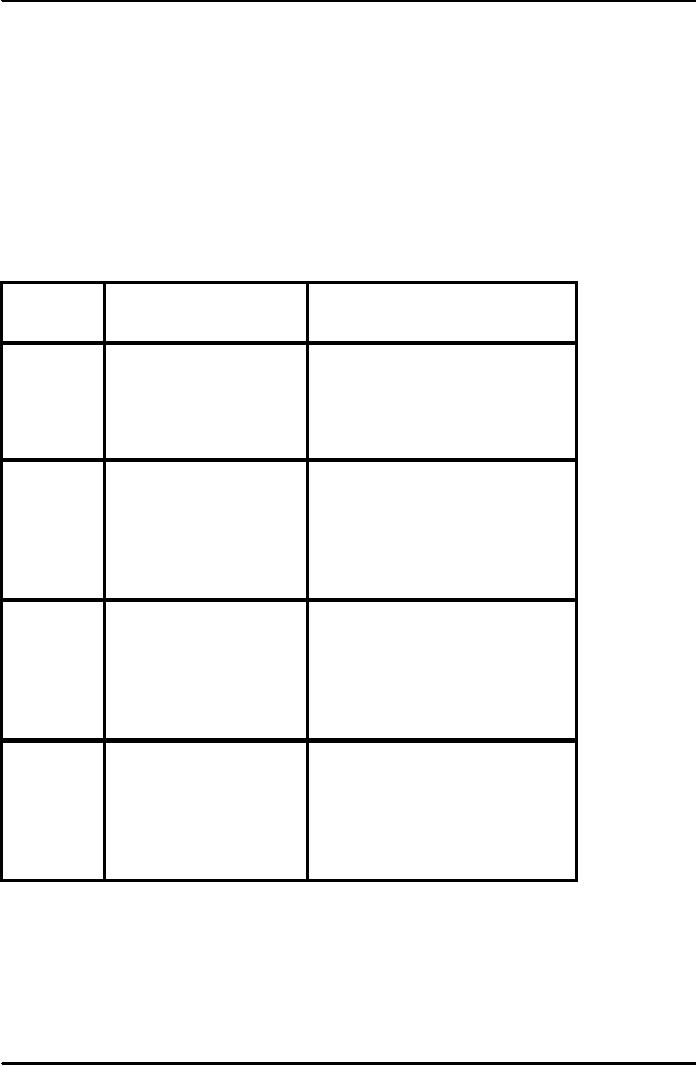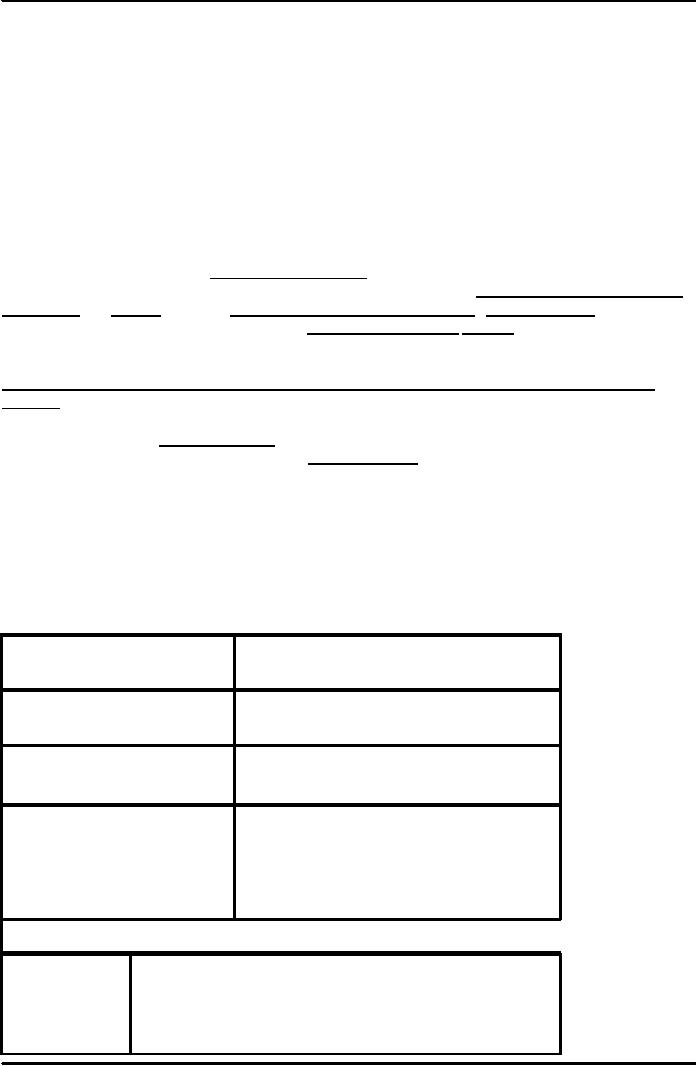 |
MINUTES OF THE MEETING:Committee Members’ Roles, Producing the Minutes |
| << MEMORANDUM & CIRCULAR:Purpose of Memo, Tone of Memorandums |
| BUSINESS REPORTS:A Model Report, Definition, Purpose of report >> |

VU
Lesson
28
MINUTES
OF THE MEETING
Preparing
Minutes of Meetings
In a typical
business, many
committees and task forces operate
within the company. The
purpose
of
committees
is to
discuss various problems and
to
make recommendations to management.
A
standing
committee is one that
operates permanently year after year,
although its members may
change.
A
task force is a group of people
who are appointed to solve a
specific problem; when
they
make
their recommendation on the `task'
assigned to them, the task force is
disbanded. Each
department
may
have several committees that
meet periodically usually once a
week, every two weeks,
or
monthly.
If you
are working in a sales
department, for
example, there may be
committees
on
advertising,
sales
conferences,
commissions,
forms
control,
product
development,
public
relations,
and
so on.
A
meeting has been
called....
Statutory
.....
because the law demands ...
shareholders', creditors',
director',
it
councillors'
meetings
Managerial
....
To progress company
to
inform of policy, to brief, to
delegate
affairs
tasks,
to discuss problems, to
reach
group
decisions, etc
Creative
....
to generate ideas, to open to `brainstorm' around the
idea of what
up
new possibilities or avenues the
firm could design, manufacture;
to
of
action
produce
an advertising slogan, poster,
etc.
Negotiating
....
to reach a solution to a
management
and trade union to
agree
problem
acceptable to two
pay
increases
sides
with different
interest
General/
....
to report back to a group
Annual General Meeting of
shareholders
public
membership,
or to air matters or club membership
meeting; public
of
public interest
enquiries
into planning
proposals
(members
& roles)
Members
of Meetings & their
role
117

VU
Committee
Members' Roles
�
The
Chairman's Role: to coordinate the
work of the committee.. Leader,
guide, umpire.
�
The
Secretary's Role: to
carry out the administrative work of the
committee... organizer,
chairman's
right hand
�
The
Treasurer's Role: to
monitor the committee financial
activities
�
The
Committee Member's Role: To participate at
meetings and do work
delegated to him or
her.
�
(Special
terms)
Preparing
Minutes of Meetings
Special
terms for meetings
�
Ad
hoc for
the particular purpose of
�
Advisory
submitting
suggestions or advice to a person or
body entitled to carry out
decisions and
actions.
�
Agenda
a
`timetable' listing items
for discussion at a
meeting
�
AGM
Annual
General Meeting
�
Apologies
for
absence written or orally delivered
excuse for not being able to
attend a meeting
�
Chairman
coordinator
of a committee, working party,
etc.
�
Chairman's
agenda like
to ordinary agenda but
containing
additional
information for
guidance
�
Executive
having power to
act upon and carry
out decisions.
�
Ex
officio by
reason of an existing office or
post
�
Honorary
performing
a duty without
payment
�
Minutes
written
summary of a meeting's
business
�
Motion
a
topic formally introduced
for discussion
�
Nem
con no one
disagreeing
�
Opposer
one
who speaks against
�
Other
business items
discussed outside main
business of meeting
�
Proposer
one
who speaks in favour of a
motion
�
Resolution
a
decision reached after a vote at
formal meetings a motion
successfully introduced
�
Secretary
committee
administrator
�
Sine
die indefinitely
�
Standing
committee one
which has an indefinite term of
office
�
Treasurer
financial
guardian
�
Unanimous
all of
like mind
Minutes
of Informal Meetings
The
written record of the proceedings of a
meeting is called the minutes of the
meeting. Since most
meetings
in business are informal
(that is, do not follow the
rules of parliamentary procedure), the
minutes
are
also informal. The minutes
usually include the date, time, and
place of the meeting; the name of
the
presiding
officer; a list of those
present (and frequently
those absent); and the time of
adjournment.
Discussions
are usually
summarized.
Usually
the minutes are signed by the
person who took them and
sometimes by the presiding officer as
well.
Minutes
are usually duplicated, and
copies are sent to each
person present at the meeting
and to other
designated
officials. Lets look at the minutes of a
meeting.
Presiding:
Naeem
Ahmad, President
Present:
Ahmad Ali
Muhammad
Aleem
Sara
Zaman
Yousif
Habib
Absent:
Munir Ahmad
Muhammad
Asif
Tariq
Nazir
After
calling the meeting to order at 3:15
pm. The president asked the
treasurer for a brief
report....
118

VU
The
president asked Sara Zaman,
chairperson of the investment committee,
for the committee
recommendation....
The
president asked Ahmad Ali of
Lauder, Bennet, and Laser, the
club's broker, to
comment....
Mr
Habib announced that the
club's annual picnic is schedule
for Saturday, Sept 14, at
Al-Hamra Hall in
Lahore......
The
meeting was adjourned at 5:30
pm
Respectfully
submitted,
Hassan
Secretary
Minutes
of Formal Meetings
Minutes
of meetings that follow parliamentary
procedure are somewhat
different in form from the
informal
minutes
illustrated here. Formal minutes do not
include discussions. Only motions,
resolutions, committee
assignments
and reports, and other
specific accomplishments are included.
Topical headings are used
for
easy
reference and how the
recorder has briefly
summarized a speaker's remarks.
Note, too, that
motions
should
be worded specifically followed by the
name of the person who made
the motion and the name
of
the
seconded.
Resolutions
to express sympathy, appreciation, congratulations,
and the like are often
passed at formal
meetings.
The
paragraphs giving the reasons
for the resolution are
introduced by the word
WHEREAS
(followed
by a comma) and that the
paragraphs stating the action to be taken
are introduced by the
word
RESOLVED
(also followed by a
comma).
Time
& Place: The regular
monthly meeting of the Historical-Commercial
Club of Lahore was called
to
order
by the president, Naeem Ahmad, on
Friday, February 8, 2006, at 2 pm in the
Jinnah room of the
Plaza
Hotel
The
minutes of the last meeting
were read
Minutes
and
approved.
Treasurer's
report
The
following report was given by
Fatima
Hanif,
the treasurer:
Balance
on hand, Jan 1, 2006
Rs.
23720.90
18160.50
Total
41881.40
Paid
out in January
8500.00
----------------
Balance
33381.4
The
treasurer's report was
accepted.
Old
Business
It
was moved, seconded, and
voted that a booklet
describing
local commercial site of historic
interest be written
and
published
by the club and distributed to local
schools.
119

VU
New
Business
After
a discussion about improving the
club's ability to
advise
the local media about its
activities, a committee
consisting
of
Fatima Hanif, chairperson;
Sara Ahmad, Iqbal was
appointed
to
report the next
meeting.
Program
Naeem
Ahmad introduced Ms Munir, an
archaeologist at
City
University......
The
meeting was adjourned at 4:15
pm
Respectfully
submitted
Zaheer
Secretary(producing
minutes)
Producing
the Minutes
Resolution
minutes
Some
types of meeting those of
boards of directions, for example
record only the
decision
reached,
usually after a vote. The arguments,
initial disagreements or conflicting
views remain unwritten
or
unrecorded.
Thus a lengthy discussion on the pro's
and con's of keeping a barely
profitable branch
store
open
may be badly summarized
as:
5
Liberty Branch
It
was resolved that the company's liberty
branch be closed with effect from 31
May 2006 and the premises,
fixtures
and
fittings offered for
sale
Such
minutes usually include the word
`resolved' and may indicate the pattern
of voting. Otherwise, the
items,
`Apologies for Absence', `Minutes of the
Last Meeting', `Matters
Arising' and `Date of Next
Meeting'
follow
the pattern of narrative minutes. Note
that in some formal
meetings, the `Matters Arising'
and `Any
Other
Business' items are not
included, as a tighter rein is kept on
what may be discussed.
Narrative
Minutes( fuller picture &
view)
Sometimes
referred to as minutes of narration, narrative minutes
tell more of the `story of
what
happened
and who said what at a
meeting. The main points of
the background and discussion leading to
a
decision
are recorded, and so anyone
reading such minutes will
gain a much fuller picture of a
committee's
work
and views.
Narrative
minutes are recorded in reported
speech. This simply involves
referring to committee
members
in the third person either by their
office `The chairman
said..' or by name, `Mr
Naeem asked
whether
....' When decisions are
reached by a vote, expressions
such as, `it was
generally agreed that....'
`It
was
therefore decided that....' Are
used to introduce the details of the
decision. Further, to keep the
record
objective
and neutral, the passive is often
used: `The secretary was
asked
to
write to the Council
to.....'.(Care
regarding
narration)
Care
must be taken when recording narrative
minutes that verb tenses
are appropriate and that the
time
interval
between the actual discussion at the
meeting and the later recording of the
minutes does not lead
to
confusion:
He
said he would contact the
suppliers next
week.
At
the time this statement was made,
`next week' was true, but if
the minutes were distributed
and
read
a fortnight after the meeting took
place, it would no longer be true; this
expressions like `the
following
week'
are more accurate.
Action
Minutes
Busy
committees sometimes like to
introduce a right hand blank column
beside the minutes in
order
to put a designated committee
member's name against a particular
task to be carried
out:
120

VU
6
Annual games
The
secretary was asked to seek approval to
use the company sports Ground
again.
Action
by:
Secretary
Some
rules of indirect speech
`I'm
sorry I'm late. I missed the
bus.' DIRECT SPEECH
He
said that he was sorry he
was late. He had missed the
bus. REPORED SPEECH
VERSION.
He
apologized for being late. He had
missed the bus.
Some
rules
Rule
one: persons/pronouns
I
he,
she
you
we
they
you
(pl)
Rule
two: the tenses of
verbs
Rule
three: the distancing
effect
Today...
that day, now.... then,
here.... there, this .... that,
these ..... those, tomorrow
...
the
next/ following day,
yesterday .... the previous
day
Rule
four: conveying the tone of
the direct speech
If
the reported speech writer is not
very careful, the reporting
may easily slip into a dull
`he
said,
she said, he said, she said', so it is
important to vary the words
that introduce the
reported
speech:
Asked
that, wondered whether, strongly denied
that, confirmed that, suggested
that,
suggested
that, etc.
121
Table of Contents:
- COMMUNICATION:Definition of Communication, Communication & Global Market
- FLOW OF COMMUNICATION:Internal Communication, External Communication
- THEORIES OF COMMUNICATION:Electronic Theory, Rhetorical Theory
- THE PROCESS OF COMMUNICATION & MISCOMMUNICATION:Message
- BARRIERS IN EFFECTIVE COMMUNICATION /COMMUNICATION FALLOFF
- NON- VERBAL COMMUNICATION:Analysing Nonverbal Communication
- NON- VERBAL COMMUNICATION:Environmental Factors
- TRAITS OF GOOD COMMUNICATORS:Careful Creation of the Message
- PRINCIPLES OF BUSINESS COMMUNICATION:Clarity
- CORRECTNESS:Conciseness, Conciseness Checklist, Correct words
- CONSIDERATION:Completeness
- INTERCULTURAL COMMUNICATION
- INTERCULTURAL COMMUNICATION:Education, Law and Regulations, Economics
- INDIVIDUAL CULTURAL VARIABLES:Acceptable Dress, Manners
- PROCESS OF PREPARING EFFECTIVE BUSINESS MESSAGES
- Composing the Messages:THE APPEARANCE AND DESIGN OF BUSINESS MESSAGES
- THE APPEARANCE AND DESIGN OF BUSINESS MESSAGES:Punctuation Styles
- COMMUNICATING THROUGH TECHNOLOGY:Email Etiquette, Electronic Media
- BASIC ORGANIZATIONAL PLANS:Writing Goodwill Letters
- LETTER WRITING:Direct Requests, Inquiries and General Requests
- LETTER WRITING:Replies to Inquiries, Model Letters
- LETTER WRITING:Placing Orders, Give the Information in a Clear Format
- LETTER WRITING:Claim and Adjustment Requests, Warm, Courteous Close
- LETTER WRITING:When The Buyer Is At Fault, Writing Credit Letters
- LETTER WRITING:Collection Letters, Collection Letter Series
- LETTER WRITING:Sales Letters, Know your Buyer, Prepare a List of Buyers
- MEMORANDUM & CIRCULAR:Purpose of Memo, Tone of Memorandums
- MINUTES OF THE MEETING:Committee Members’ Roles, Producing the Minutes
- BUSINESS REPORTS:A Model Report, Definition, Purpose of report
- BUSINESS REPORTS:Main Features of the Report, INTRODUCTION
- BUSINESS REPORTS:Prefatory Parts, Place of Title Page Items
- MARKET REPORTS:Classification of Markets, Wholesale Market
- JOB SEARCH AND EMPLOYMENT:Planning Your Career
- RESUME WRITING:The Chronological Resume, The Combination Resume
- RESUME & APPLICATION LETTER:Personal Details, Two Types of Job Letters
- JOB INQUIRY LETTER AND INTERVIEW:Understanding the Interview Process
- PROCESS OF PREPARING THE INTERVIEW:Planning for a Successful Interview
- ORAL PRESENTATION:Planning Oral Presentation, To Motivate
- ORAL PRESENTATION:Overcoming anxiety, Body Language
- LANGUAGE PRACTICE AND NEGOTIATION SKILLS:Psychological barriers
- NEGOTIATION AND LISTENING:Gather information that helps you
- THESIS WRITING AND PRESENTATION:Write down your ideas
- THESIS WRITING AND PRESENTATION:Sections of a Thesis (Format)
- RESEARCH METHODOLOGY:Studies Primarily Qualitative in Nature
- RESEARCH METHODOLOGY:Basic Rules, Basic Form, Basic Format for Books